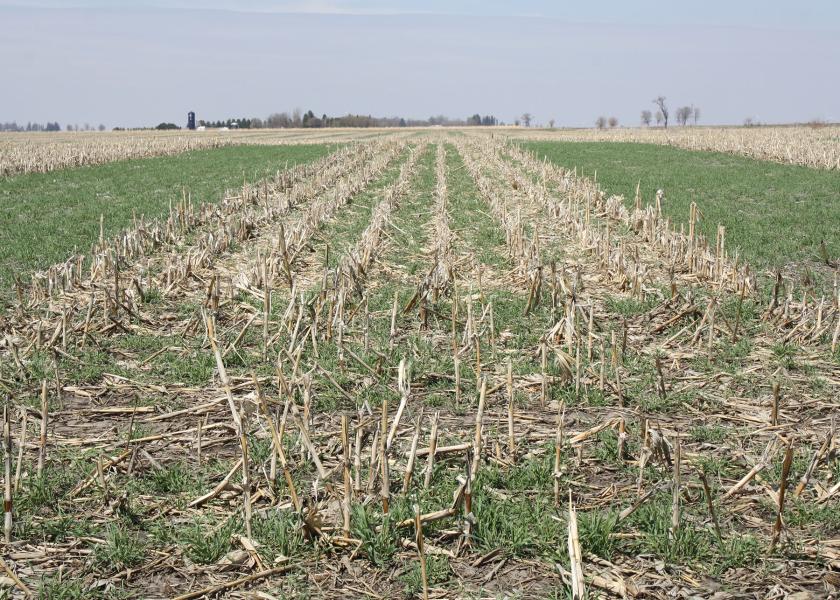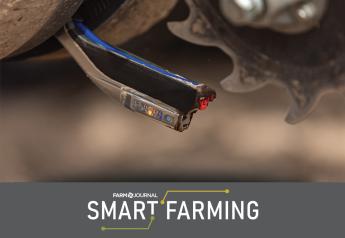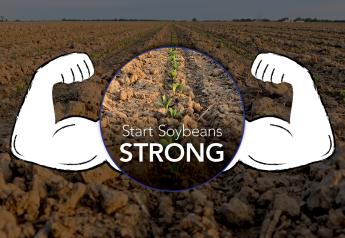Dissect Costs Versus Benefits of Conservation Practices

Define your goals and desired ROI for conservation practices
Some of the best agronomic decisions Dean Sponheim has made on his north-central Iowa farm were driven by economics.
In 1999, on one field, he began strip-tilling to reduce soil crusting, which led to poor emergence and replanting about 80% of the time each spring.
“It was not for environmental or conservation practices,” says Sponheim, who farms near Osage, Iowa. “It was a true economical decision to try strip-tilling.”
After quickly seeing the benefits, he adopted the novel practice across all his acres. Strip-till morphed into no-till, and around a decade later Sponheim dived into strip cropping and cover crops.
While Sponheim might have accidentally become a conservationist, he is seeing the benefits in yields, soil health and more. He now coaches other farmers with his business, Sponheim Sales and Services, which provides agronomic con-sulting and products, such as cover crops, for conservation practices.
GO ON THE OFFENSE
While farmers realize the benefits of improving soil health, they can struggle with the cost-benefit equation. Mitchell Hora, Iowa farmer and CEO of Continuum Ag, says farmers need to approach soil health offensively instead of defensively.
“Cover crops and no-till have been branded wrong,” he says. “They have been branded as defensive management tools — defense against erosion, water quality problems, etc., but cover crops are an offensive tool. It is my nutrient stabilizer, herbicide program, moisture management program and soil building program — it’s my resiliency program.”
COVER AND FEED
Cover crops provide a living root, Hora says, which can keep the microbes fed and the soil nourished to aid in better performing crops. He says one teaspoon of healthy soil contains more than 8 billion microbes, and they need to be fed.
“If we only have a living plant from mid-May until early September that’s not very much carbon being pumped into the ground,” he says. “It’s not very much food to feed those microbes in the off season, and a lot of them die out.”
Sponheim has used cover crops to extend into the months in the spring and fall when corn or soybeans are not growing.
“With cover crops, we can continue to capture the nitrogen that would be lost during that time,” he says. “A lot of the organisms we introduced with cover crops are translocating nutrients deeper in the soil profile for our cash crops.”
As you dive into multiple years of conservation practices, take good notes and analyze your results, suggests Steve Hoffman, agronomist and president of InDepth Agronomy. For instance, you might realize you can trim costs in certain areas and still achieve your goals.
“You likely have a lot of options for cost-share programs with cover crops,” he says. “But many of those programs prescribe certain seeding rates. What we’re finding is those seeding rates are excessive.”
For example, a program might require 2 bu. per acre of cover crop seed, but 1 bu. is enough, Hoffman says. Weigh the economics, as the drop in seed costs might outweigh the program payments.
HYPE VERSUS REALITY
As you explore cover crop options, focus on separating the hype from reality, Hoffman says.
“We’re doing a lot of this with faith that over time we’ll see a small improvement in organic matter,” he says. “It’s hard to measure, but we have seen noticeable improvements in soil health by using cover crops.”
Sponheim agrees with Hoffman. Even though he started some of these practices to fix certain problems in his field, he’s now playing the long game.
“We are keeping the soil healthy and building organic matter on our farm,” he says. “It is never too late to start.”
Proof is in the Yields
Dean Sponheim believes in the agronomic benefits of conservation practices, but he also wants to see a return on his investment. For seven years he’s planted a side-by-side trail on an 80-acre field. On half of the field he plants cover crops, and the other half remains bare.
“I’m seeing a 7-bu. increase on the corn side and about a 0.5-bu. increase on the beans,” he says. “So, we’re netting about $20 to $30 an acre more where we have our cover crops. We’re paying $30 to $35 to plant the cover crops, so we’re still behind about $15. But we’re getting higher soil test results for P and K. Also, soil organic matter is starting to creep back up because of the cover crops.”







